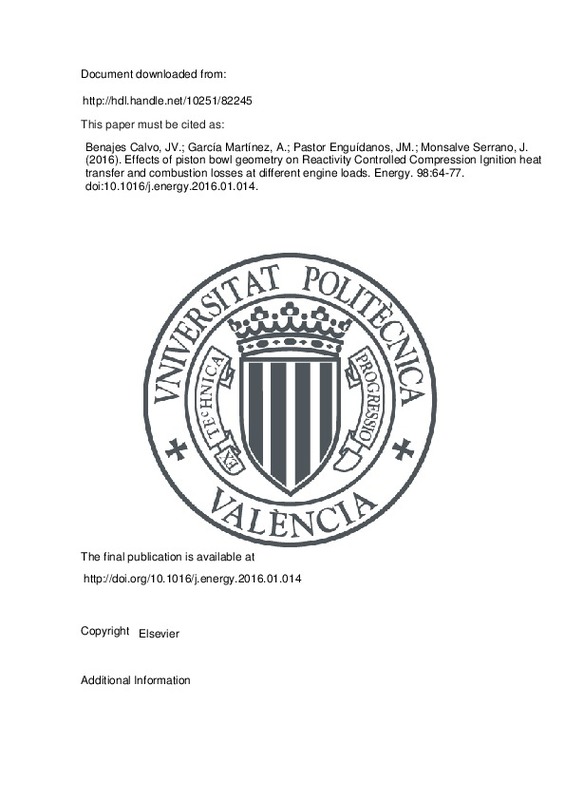JavaScript is disabled for your browser. Some features of this site may not work without it.
Buscar en RiuNet
Listar
Mi cuenta
Estadísticas
Ayuda RiuNet
Admin. UPV
Effects of piston bowl geometry on Reactivity Controlled Compression Ignition heat transfer and combustion losses at different engine loads
Mostrar el registro sencillo del ítem
Ficheros en el ítem
| dc.contributor.author | Benajes Calvo, Jesus Vicente
|
es_ES |
| dc.contributor.author | García Martínez, Antonio
|
es_ES |
| dc.contributor.author | Pastor Enguídanos, José Manuel
|
es_ES |
| dc.contributor.author | Monsalve Serrano, Javier
|
es_ES |
| dc.date.accessioned | 2017-06-02T09:54:59Z | |
| dc.date.available | 2017-06-02T09:54:59Z | |
| dc.date.issued | 2016-03-01 | |
| dc.identifier.issn | 0360-5442 | |
| dc.identifier.uri | http://hdl.handle.net/10251/82245 | |
| dc.description.abstract | This work investigates the effects of the piston bowl geometry on RCCI (Reactivity Controlled Compression Ignition) heat transfer and combustion losses and its repercussion on the engine efficiency. For this purpose, three piston geometries with compression ratio 14.4:1 have been studied and compared by means of computational modeling. In addition, the engine operating conditions proposed at low, medium and high load were also validated experimentally in a heavy-duty single-cylinder engine adapted for dual fuel operation. The engine speed was kept constant at 1200 rev/min during the research. Results suggest that heat flux through the piston surface represent the major portion of the heat transfer energy. Thus, the comparison of the three geometries demonstrates that reduced piston surface area and reduced charge motion, are the key factors to improve the gross indicated efficiency over the different engine loads. Moreover, it is found that a shallow piston geometry with a smooth transition from the center to the squish region, with a 16% reduced surface area, strongly improves the gross work at low load. However, this gain diminishes due to increased combustion losses as engine load increases. Finally, an intermediate geometry was confirmed as the best balanced piston geometry for RCCI operation over the three different loads. | es_ES |
| dc.description.sponsorship | The authors would like to acknowledge VOLVO Group Trucks Technology for supporting this research and to express their gratitude to CONVERGENT SCIENCE Inc. for their kind support for performing the CFD calculations using CONVERGE software. | en_EN |
| dc.language | Inglés | es_ES |
| dc.publisher | Elsevier | es_ES |
| dc.relation.ispartof | Energy | es_ES |
| dc.rights | Reserva de todos los derechos | es_ES |
| dc.subject | Reactivity Controlled Compression Ignition | es_ES |
| dc.subject | Heat transfer | es_ES |
| dc.subject | Efficiency | es_ES |
| dc.subject | Dual fuel | es_ES |
| dc.subject | Combustion | es_ES |
| dc.subject.classification | MAQUINAS Y MOTORES TERMICOS | es_ES |
| dc.title | Effects of piston bowl geometry on Reactivity Controlled Compression Ignition heat transfer and combustion losses at different engine loads | es_ES |
| dc.type | Artículo | es_ES |
| dc.identifier.doi | 10.1016/j.energy.2016.01.014 | |
| dc.rights.accessRights | Abierto | es_ES |
| dc.contributor.affiliation | Universitat Politècnica de València. Escuela Técnica Superior de Ingenieros Industriales - Escola Tècnica Superior d'Enginyers Industrials | es_ES |
| dc.contributor.affiliation | Universitat Politècnica de València. Instituto Universitario CMT-Motores Térmicos - Institut Universitari CMT-Motors Tèrmics | es_ES |
| dc.contributor.affiliation | Universitat Politècnica de València. Escuela Técnica Superior de Ingeniería del Diseño - Escola Tècnica Superior d'Enginyeria del Disseny | es_ES |
| dc.description.bibliographicCitation | Benajes Calvo, JV.; García Martínez, A.; Pastor Enguídanos, JM.; Monsalve Serrano, J. (2016). Effects of piston bowl geometry on Reactivity Controlled Compression Ignition heat transfer and combustion losses at different engine loads. Energy. 98:64-77. doi:10.1016/j.energy.2016.01.014 | es_ES |
| dc.description.accrualMethod | S | es_ES |
| dc.relation.publisherversion | http://doi.org/10.1016/j.energy.2016.01.014 | es_ES |
| dc.description.upvformatpinicio | 64 | es_ES |
| dc.description.upvformatpfin | 77 | es_ES |
| dc.type.version | info:eu-repo/semantics/publishedVersion | es_ES |
| dc.description.volume | 98 | es_ES |
| dc.relation.senia | 300278 | es_ES |
| dc.identifier.eissn | 1873-6785 | |
| dc.contributor.funder | Volvo Group Trucks Technology | es_ES |







![[Cerrado]](/themes/UPV/images/candado.png)

